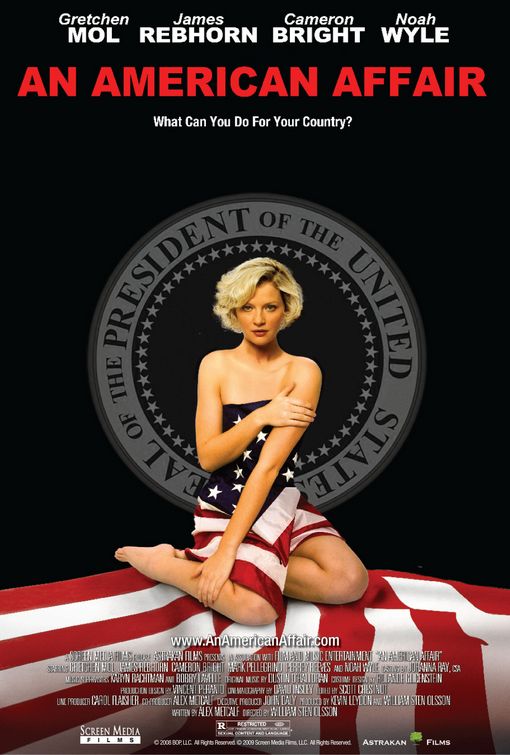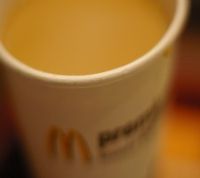
I thought it was quite well done and the acting was uniformly excellent. As I was watching, it quickly became obvious that it's loosely based on the Mary Pinochet Meyer story...
In the summer of 1954 the Meyers got new neighbours. John F. Kennedy and his wife Jackie Kennedy purchased Hickory Hill, a house several hundred yards from where the Meyers lived. Mary became good friends with Jackie and they went on walks together.
In November, 1954, Meyer replaced Thomas Braden as head of International Organizations Division. Meyer began spending a lot of time in Europe. One of Meyer's tasks was to supervise Radio Free Europe and Radio Liberty, the United States government broadcasts to Eastern Europe. According to Nina Burleigh (A Very Private Woman) Meyer was "overseeing a vast 'black' budget of millions of dollars channeled through phony foundation of a global network of associations and labor groups that on their surface appeared to be progressive".
On 18th December, 1956, Mary's nine-year-old son, Michael, was hit by a car on the curve of highway near their house and killed. It was the same spot where the family's golden retriever had been killed two years earlier. The tragedy briefly brought the couple together. However, in 1958, Mary filed for divorce. In her divorce petition she alleged "extreme cruelty, mental in nature, which seriously injured her health, destroyed her happiness, rendered further cohabitation unendurable and compelled the parties to separate."
Mary continued to live with her two sons in the family home of Langley Commons. She took up art and her sister, Antoinette Pinchot and her husband Ben Bradlee, allowed her to set up a studio in their converted garage. Mary also began a relationship with the abstract artist, Kenneth Noland. Mary also got to know Robert Kennedy, who had moved in to his brother's house, Hickory Hill, after John F. Kennedy and Jackie Kennedy moved out in 1960.
According to Nina Burleigh (A Very Private Woman) James Angleton began bugging Mary's telephone and bedroom after she left Cord Meyer. This information came from an interview with Joan Bross, the wife of John Bross, a high-ranking CIA official. Angleton became a regular visitor to the family home and took Mary's sons fishing.
JFK with Mary Meyer (far right). Antoinette Bradlee is second on the left.
In October 1961, Mary began visiting John F. Kennedy in the White House. It was about this time she began an affair with the president. Mary told her friends, Ann and James Truitt, that she was keeping a diary about the relationship.
In 1962 Mary made contact with Timothy Leary, the director of research projects at Harvard University. Leary supplied LSD to Mary who used it with Kennedy. Leary also claimed that Mary helped influence Kennedy's views on nuclear disarmament and rapprochement with Cuba. It was later discovered that the FBI was keeping a file on Mary. Later, James Angleton, head of counterintelligence at the CIA admitted that the agency was bugging Mary's telephone and bedroom during this period.
Kennedy aide, Meyer Feldman, claimed in an interview with Nina Burleigh that the president might have discussed substantial issues with her: "I think he might have thought more of her than some of the other women and discussed things that were on his mind, not just social gossip."
In January, 1963, Philip Graham, the publisher of the Washington Post, attended a convention of American newspaper editors in Phoenix. Graham, who was suffering from alcoholism, disclosed at the meeting that John F. Kennedy was having an affair with Mary Meyer. No newspaper reported this incident but Kennedy decided to bring an end to the affair. However, they continued to see each other at social functions.
According to his biography, Flashbacks (1983) Timothy Leary claims that Mary phoned him the day after Kennedy was assassinated: "They couldn't control him any more. He was changing too fast. He was learning too much... They'll cover everything up. I gotta come see you. I'm scared. I'm afraid."
In the summer of 1964 Meyer told friends that she believed someone had been inside her house while she was away. On another occasion she told Elizabeth Eisenstein that "she thought she had seen somebody leaving as she walked in". Mary reported these incidents to the police. Eisenstein said Mary was clearly frightened by these incidents.
On 12th October, 1964, Mary Pinchot Meyer was shot dead as she walked along the Chesapeake and Ohio towpath in Georgetown. Henry Wiggins, a car mechanic, was working on a vehicle on Canal Road, when he heard a woman shout out: "Someone help me, someone help me". He then heard two gunshots. Wiggins ran to the edge of the wall overlooking the tow path. He later told police he saw "a black man in a light jacket, dark slacks, and a dark cap standing over the body of a white woman."
Mary appeared to be killed by a professional hitman. The first bullet was fired at the back of the head. She did not die straight away. A second shot was fired into the heart. The evidence suggests that in both cases, the gun was virtually touching Mary’s body when it was fired. As the FBI expert testified, the “dark haloes on the skin around both entry wounds suggested they had been fired at close-range, possibly point-blank”.
Soon afterwards Raymond Crump, a black man, was found not far from the murder scene. He was arrested and charged with Mary's murder. Police tests were unable to show that Crump had fired the .38 caliber Smith and Wesson gun. There were no trace of nitrates on his hands or clothes. Despite an extensive search of the area no gun could be found. This included a two day search of the tow path by 40 police officers. The police also drained the canal near to the murder scene. Police scuba divers searched the waters away from where Mary was killed. However, no gun could be found. Nor could the prosecution find any link between Crump and any Smith and Wesson gun.
...
James Angleton, CIA counterintelligence chief, admitted that he knew of Mary's relationship with John F. Kennedy and was searching her home looking for her diary and any letters that would reveal details of the affair. According to Ben Bradlee, it was Mary's sister, Antoinette Bradlee, who found the diary and letters a few days later. It was claimed that the diary was in a metal box in Mary's studio. The contents of the box were given to Angleton who claimed he burnt the diary. Angleton later admitted that Mary recorded in her diary that she had taken LSD with Kennedy before "they made love".
Leo Damore claimed in an article that appeared in the New York Post that the reason Angleton and Bradlee were looking for the diary was that: "She (Meyer) had access to the highest levels. She was involved in illegal drug activity. What do you think it would do to the beatification of Kennedy if this woman said, 'It wasn't Camelot, it was Caligula's court'?" Damore also said that a figure close to the CIA had told him that Mary's death had been a professional "hit".
There is another possible reason why both Angleton and Bradlee were searching for documents in Meyer's house. Meyer had been married to Cord Meyer, a leading CIA operative involved in a variety of covert operations in the early 1950s. Were they worried that Meyer had kept a record of these activities? Was this why Mary Pinochet Meyer had been murdered?
After leaving the CIA in 1977 Cord Meyer wrote several books including an autobiography, Facing Reality: From World Federalism to the CIA. In the book Meyer commented on the murder of his wife: "I was satisfied by the conclusions of the police investigation that Mary had been the victim of a sexually motivated assault by a single individual and that she had been killed in her struggle to escape." Carol Delaney, the longtime personal assistant to Meyer, later admitted: "Mr. Meyer didn't for a minute think that Ray Crump had murdered his wife or that it had been an attempted rape. But, being an Agency man, he couldn't very well accuse the CIA of the crime, although the murder had all the markings of an in-house rubout."
In February, 2001, the writer, C. David Heymann, asked Cord Meyer about the death of Mary Pinchot Meyer: "My father died of a heart attack the same year Mary was killed, " he whispered. "It was a bad time." And what could he say about Mary Meyer? Who had committed such a heinous crime? "The same sons of bitches," he hissed, "that killed John F. Kennedy."







